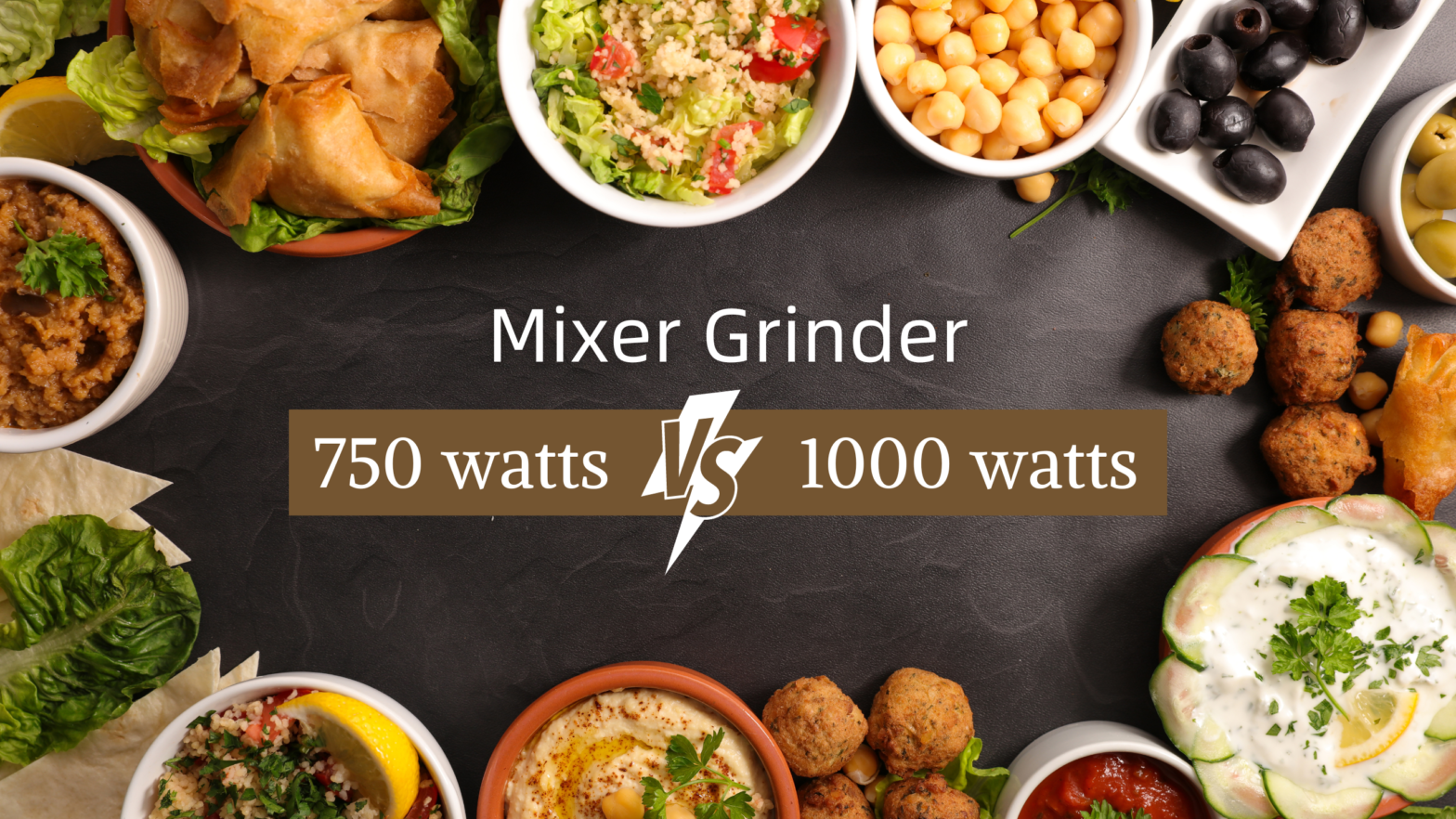Mixer Grinder 750 Watts vs. 1000 Watts: Which One Should You Choose?
Synopsis
The primary difference between a 750-watt and a 1000-watt mixer grinder lies in their power capacity. A 1000-watt mixer grinder generally offers more robust performance, making it suitable for heavy-duty tasks and faster processing, while a 750-watt counterpart is often more energy-efficient and cost-effective for everyday kitchen needs.
- Synopsis
- Introduction
- Understanding Watts in Mixer Grinders
- Introduction to Mixer Grinder 750 Watts vs 1000 Watts
- Advantages and Disadvantages of a 750-Watt Mixer Grinder
- Best Mixer Grinder in India: 750 watts
- Advantages and Disadvantages of a 1000-Watt Mixer Grinder
- Best Mixer Grinder in India: 1000 watts
- Determining Your Needs
- Key Features to Consider
- Energy Efficiency and Environmental Impact
- Making an Informed Decision
- Maintenance and Care Tips
- Conclusion
- Additional Resources
- Conclusion
Introduction
In today’s fast-paced kitchens, a mixer grinder is an indispensable companion. It aids in blending, grinding, and chopping ingredients with ease.
But when you’re looking to buy the best mixer grinder, you might wonder: should you get one with 750 watts or 1000 watts of power?
This blog is here to help you figure out the right choice by explaining the difference in wattage and giving you the information you need to decide.
Understanding Watts in Mixer Grinders
Before we delve into the comparison, let’s understand the significance of watts in the context of mixer grinders.
Watts signify the power or energy consumption of the appliance.
In simpler terms, more watts generally translate to more power and efficiency.
Introduction to Mixer Grinder 750 Watts vs 1000 Watts
When you’re picking a mixer grinder for your kitchen, one of the big choices is about how much power it has.
You can either go for a 750-watt one or a more powerful 1000-watt one.
In the upcoming sections, we’ll break down the differences between these two options to help you figure out which mixer grinder is right for you and your cooking needs.
Advantages and Disadvantages of a 750-Watt Mixer Grinder
Let’s kick off by exploring the merits and demerits of a 750-watt mixer grinder.
These machines are like the trusty workhorses of the kitchen.
Pros:
- Energy-efficient: 750-watt mixers are kinder to your electricity bill, ensuring you don’t break the bank with your culinary adventures.
- Suitable for basic kitchen tasks: They handle everyday tasks such as making smoothies, grinding spices, and crafting delectable chutneys with grace and ease.
- Cost-effective: You’ll often find these models to be more budget-friendly, offering great value for your money.
Cons:
- Limited for heavy-duty tasks: When it comes to kneading dough or grinding tough ingredients, they might struggle to keep up with the demand.
- Longer processing times: Achieving the desired consistency might require a bit more time compared to their higher-wattage counterparts.
- May struggle with certain ingredients: Hard nuts or ice might pose a challenge, pushing these mixers to their limits.
ALSO READ: Top 10 Mixer Grinders in India
Best Mixer Grinder in India: 750 watts
Here are the best mixer grinders – 750 watts – on Amazon.


